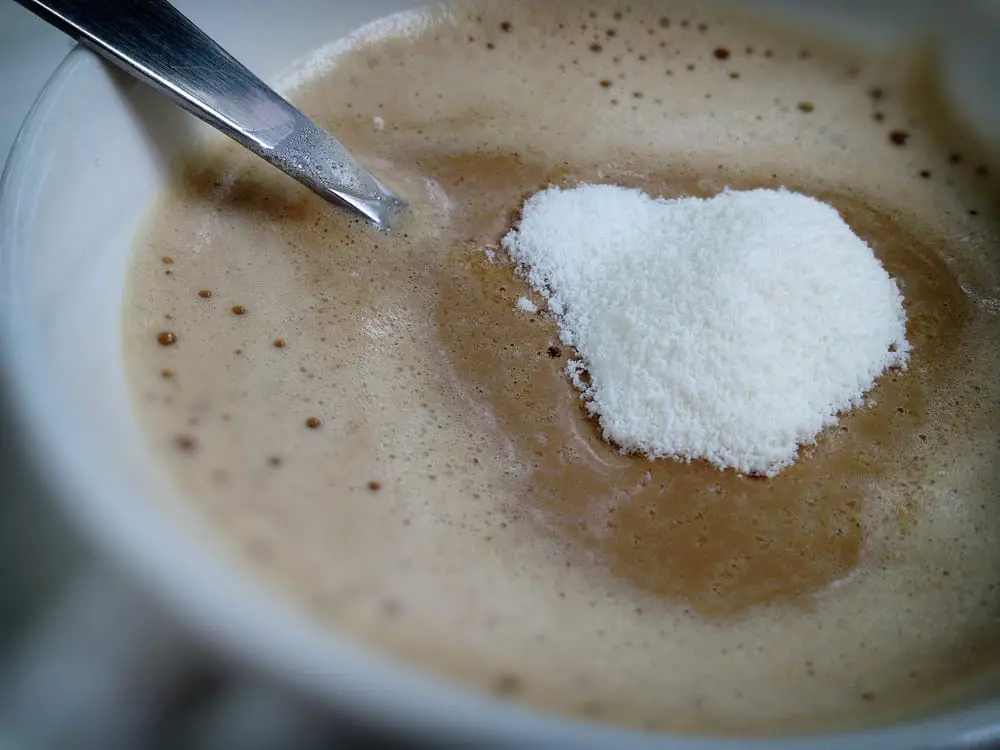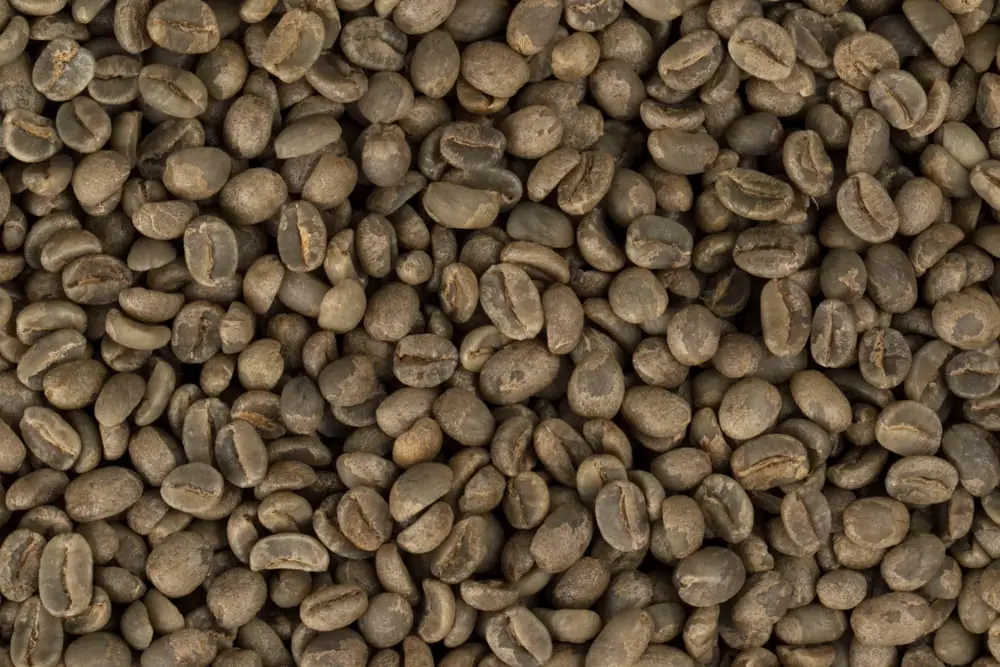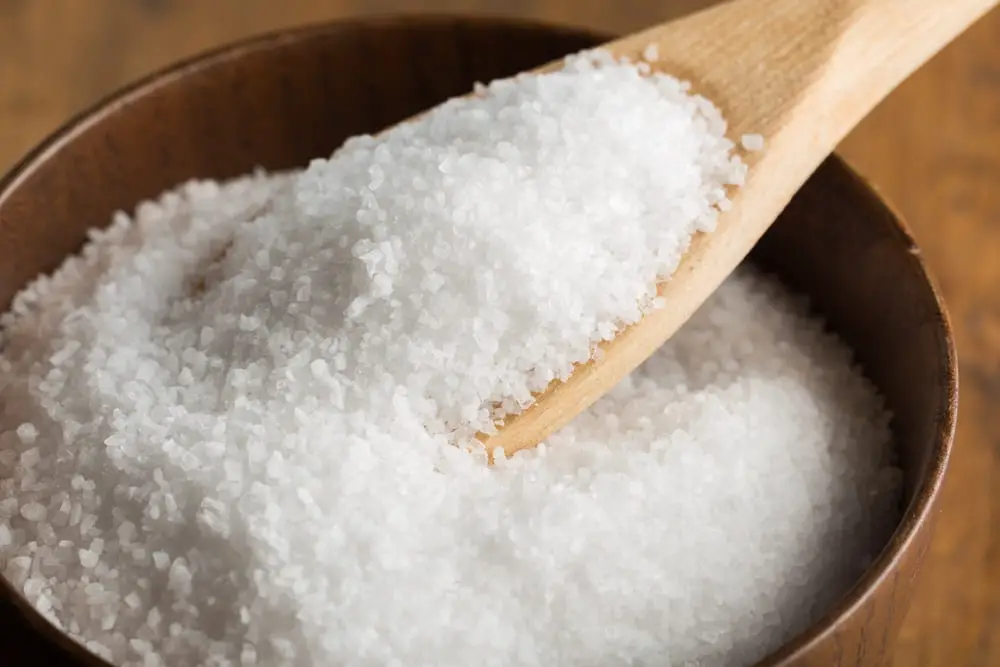
Have you ever experienced the feeling of making a cup of coffee where everything is perfect until the cream is added, and everything goes bad just because the cream is clumpy?
Do you find yourself wondering with white patches or oil droplets floating in your coffee, even though the cream you use is fine? You ask yourself a question “why is my coffee creamer chunky”? Don’t worry, to answer this question, we will learn in detail in this article now.
5 reasons and how to handle when the cream in coffee is clumpy
Acidic Coffee Will Cause The Cream To Clump

Before diving into this, did you notice what happens when you add some lemon juice to a glass of milk? That’s right, there will be precipitates and lumps, right? The mechanism behind these two phenomena is also similar.
Milk contains a protein called Casein, which gives milk its white color. When squeezing lemon into milk, it will increase the acidity, which will increase the acidity of the milk solution. The casein protein in the milk will now coagulate, separating from the water when exposed to acid. That’s what causes the milk to curdle.
Basically, creamers are vegetable fat, not milk, but it contains casein. Therefore, in an acidic environment, precipitation will occur, leading to the cream particles forming white patches and then floating on the coffee surface.
But who would add acid to coffee, right? Of course, nobody does, this phenomenon in coffee is due to some other factors that we will discuss now:
Pure coffee beans contain acids, of which Chlorogenic acid is one of the most abundant acids, with 5.5 -8% in Arabica and up to 7 – 10% in Robusta.
According to a study by the US National Library of Medicine, coffee beans that have been roasted longer have lower levels of chlorogenic acid. Therefore, dark roast coffee will be less sour than light and medium roasted coffee.
Another study by the US National Library of Medicine also showed that cold brew coffee has a lower acid concentration than hot coffee.
Besides, the origin of coffee also affects the acid content of coffee. Coffee from highland Africa will have more acidity than coffee from lowlands like Sumatra. So think before buying coffee in places where the coffee they grow is highly acidic.
Ways To Reduce Acidity In Coffee:

First, you should clearly determine if the cream in the coffee is clumping because the coffee is acidic? You can use purple litmus, pH test strips sold outside of pharmacies, or to be more accurate, you can test with a pH meter. Coffee has an ideal pH of ~5 depending on the method. If coffee has a too low pH, it proves its acidity is high, here are ways to reduce acidity in the coffee you can refer to:
- Add a little salt to coffee: salt can neutralize acids, but only a little should be added to avoid being salty.
- Add a little baking soda to coffee: like salt, baking soda also can reduce acidity in coffee, and should only be used in small amounts because the smell of baking soda can spoil the taste of the coffee cup. if you give too much.
- Deep roast coffee
- Choose a place to import coffee with less acid
- Add eggshells to ground coffee: eggshells are alkaline, neutralizing acids in coffee. Before using the eggshell, wash it with warm water, grind it and mix it with ground coffee. Be careful not to grind too hard to avoid the eggshell passing through the brewed coffee filter.
Water Temperature When Making Coffee
As a general rule, dairy products should not be heated to high temperatures unless making cheese. Make sure the coffee is kept at ~85°C when you add the cream. If you do not have a thermometer to measure, you can wait for 1 to 2 minutes for the coffee to cool.
However, high water temperature is not the only thing that can cause the ice cream to freeze, products containing casein protein are quite susceptible to temperature shock. Therefore, when putting cold cream from the refrigerator into a cup of hot coffee, it is easy to have a clumping phenomenon. To prevent this from happening, it is advisable to bring the cream to room temperature before use.
Check The Expiry Date Of The Cream

The first thing you should do is double-check the expiry date of the cream. Sometimes the simple reason for freezing is because the ice cream has gone bad.
The ingredients of creamers usually do not contain milk but contain other substances such as flavorings, whey, sugar, etc. These substances when spoiled are more difficult to detect than milk, but similarly, spoiled milk when used in coffee can coagulate, floating particles on the surface of the coffee cup.
What Kind Of Cream Do You Use?

Currently, on the market, there are 2 types of cream commonly used to make coffee. The first is a powder and the second is a liquid. Each cream has some downsides, some of which can cause clumping if not used properly.
For example, if nut milk is used, it is very easy to coagulate. The acidity in most coffees is enough to cause this milk to curdle, and in the case of a high enough temperature, it can also cause creaming or coagulation.
If you use powdered cream, you should know that powdered cream does not need to be refrigerated, putting powdered cream in the refrigerator is easier to create moisture, cause clumping, and take longer to dissolve when mixed.
You should also note that powdered cream does not dissolve in cold brew coffee, so it is advisable to dissolve the cream powder before a few hot coffees and then pour the mixture into hot coffee.
Coffee Ice Cream Is Frozen By Mixing Sugar And Cream
A USDA study found that when sugar and cream were mixed before being added to hot coffee, the sugar absorbed the water molecules in the cream, making it easier for casein to precipitate in hot coffee. Research also shows that hot coffee should be mixed with sugar first, the cream is added last to reduce coagulation. In addition, using syrup instead of solid sugar is also a reasonable option to solve this problem.
Clumping cream in a coffee can be simply because the product you use has expired, or more complicated because the acidity in your coffee interacts with the ingredients of the cream; It could also be due to the wrong way of mixing. Finding the right cause, the treatment will give the best results.
